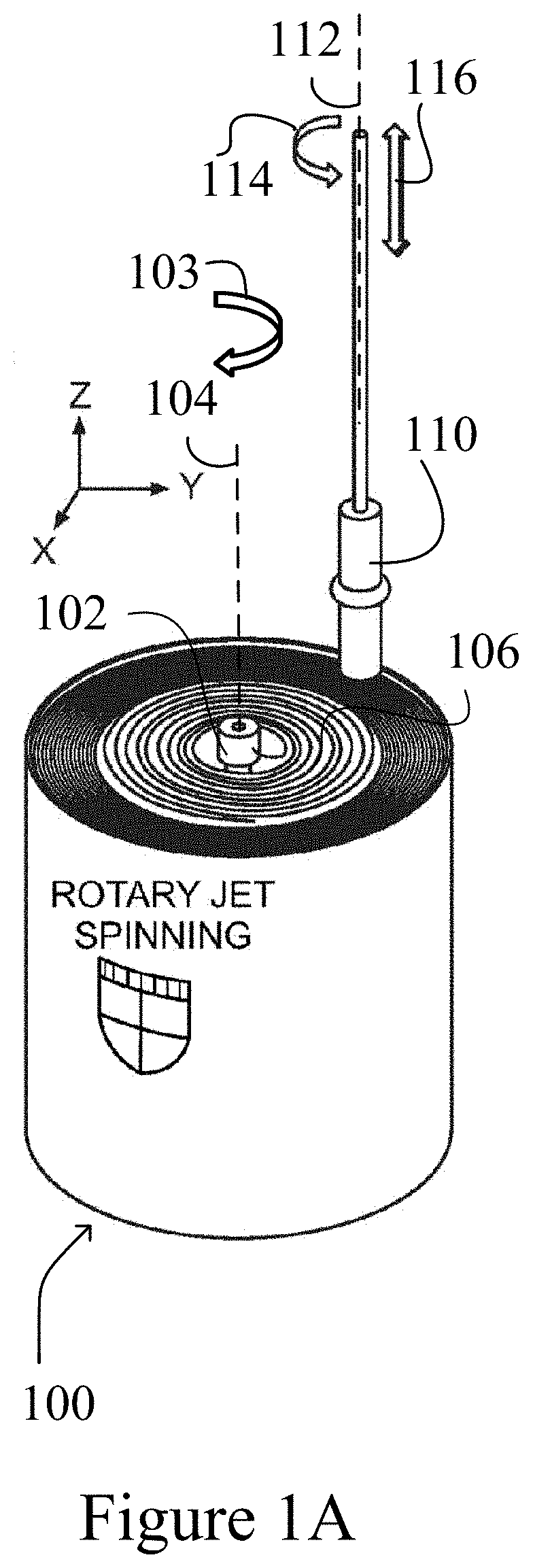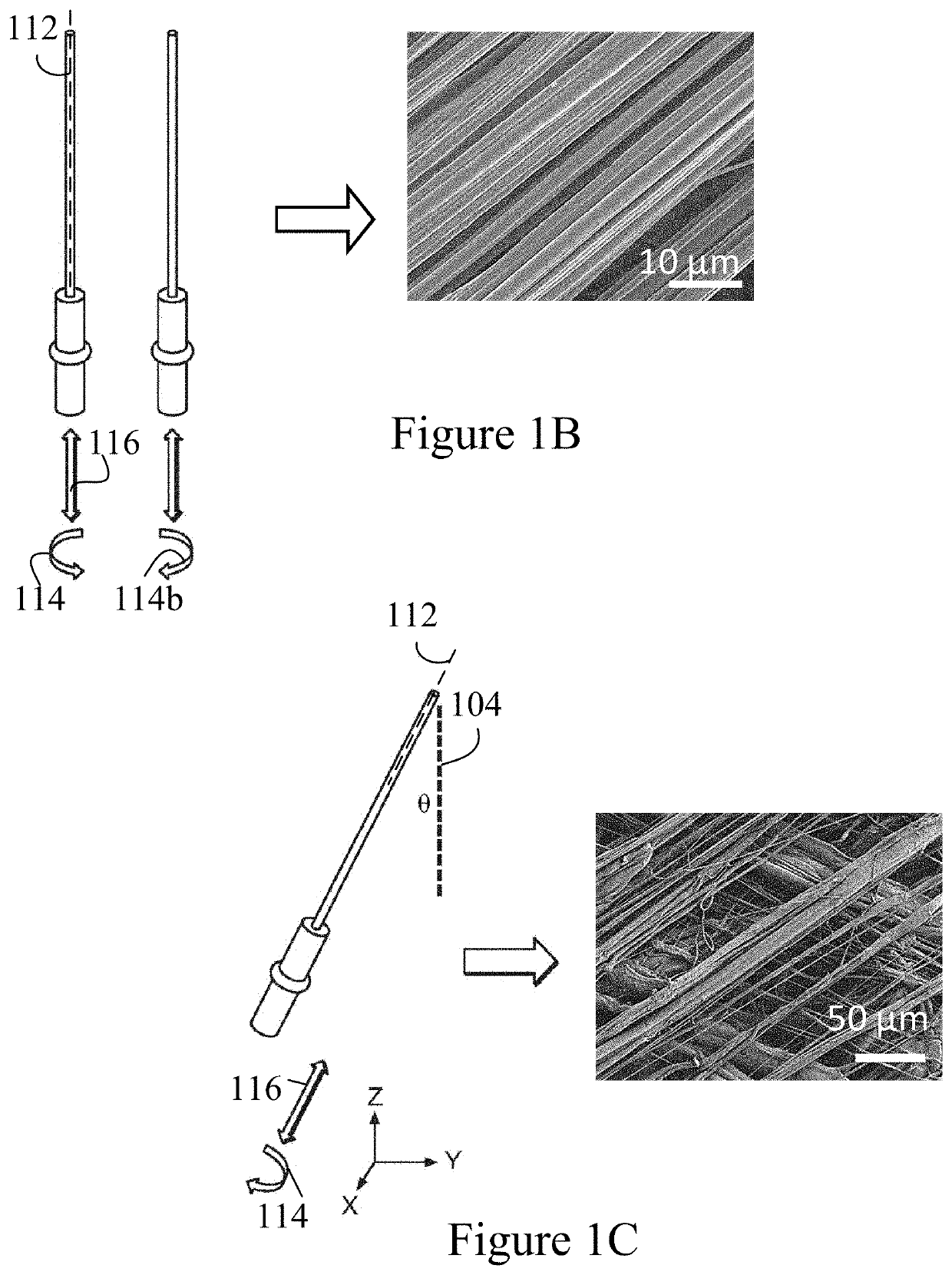Engineered polymeric valves, tubular structures, and sheets and uses thereof
a technology tubular structures, applied in the field of engineered polymeric valves, tubular structures, sheets, etc., can solve the problems of lack of long-term durability of mechanical valves, affecting the quality of mechanical valves, and generating clicking noise of mechanical valves, etc., to achieve the effect of eliminating failure at high-stress points
- Summary
- Abstract
- Description
- Claims
- Application Information
AI Technical Summary
Benefits of technology
Problems solved by technology
Method used
Image
Examples
Embodiment Construction
[0057]The present invention is based, at least in part, on the production and assembly of engineered tubular structures including oriented polymeric fibers that are suitable for use as, for example, engineered cardiac valves.
I. Methods for Generating Engineered Valve Structures
[0058]Methods for generating engineered valve structures of the invention may include a step of configuring micron, submicron or nanometer dimension polymeric fibers in a desired shape.
[0059]Suitable devices and use of the devices for fabricating the micron, submicron or nanometer dimension polymeric fibers for use in the methods of the present invention are described in U.S. Patent Publication No. 2012 / 0135448, U.S. Patent Publication No. 2013 / 0312638, and U.S. Patent Publication No. 2014 / 0322515, the contents of each of which are incorporated in their entirety by reference.
[0060]The micron, submicron or nanometer dimension polymeric fibers may have a diameter of about 15, 20, 25, 30, 35,40, 45, 50, 55, 60, 6...
PUM
| Property | Measurement | Unit |
|---|---|---|
| diameter | aaaaa | aaaaa |
| diameter | aaaaa | aaaaa |
| diameter | aaaaa | aaaaa |
Abstract
Description
Claims
Application Information
 Login to View More
Login to View More - R&D
- Intellectual Property
- Life Sciences
- Materials
- Tech Scout
- Unparalleled Data Quality
- Higher Quality Content
- 60% Fewer Hallucinations
Browse by: Latest US Patents, China's latest patents, Technical Efficacy Thesaurus, Application Domain, Technology Topic, Popular Technical Reports.
© 2025 PatSnap. All rights reserved.Legal|Privacy policy|Modern Slavery Act Transparency Statement|Sitemap|About US| Contact US: help@patsnap.com



